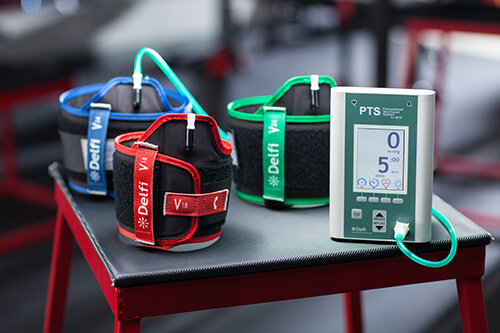Call Us Now!
Phone 210.837.8244
Blood Flow Restriction (BFR) Training
According to the American College of Sports Medicine (ACSM), optimizing muscular strength and hypertrophy can be achieved through moderate to high intensities of resistance exercise that utilize 8∼10 upper and lower body exercises. These exercises should target major muscle group’s 2∼3 dㆍwk-1 at a training intensity of more than 65% of the subject’s one-repetition maximum. (Donnelly 2009) This follows the mechanical tension model of training in which sufficient load must be place on muscle to induce adaptive changes. In fact, Dr. Meyer of Michigan State University states there is one issue on which applied exercise physiologists and molecular biologists have agreed: “to obtain substantial hypertrophy from a resistance training program, the target muscles must be subjected to substantially increased load”. Therefore, the American College of Sports Medicine recommended that, during resistance training, the load should exceed 70% of the one repetition maximum to achieve maximum hypertrophy. Unfortunately, the elderly or people rehabilitating from injury may not be able to tolerate these loads, which can limit their ability to have a strength and hypertrophy response.

Blood flow restriction (BFR) training in which a tourniquet is used on a proximal limb to limit arterial inflow while blocking venous outflow has consistently demonstrated strength and hypertrophy gains vs. controls and comparable gains to heavy load lifting
For more information on BFR, visit - Owens Recovery Secience
Services
- HIVAMAT
- EPAT- Extracorporeal Pulse Activation Technology
- Orthobiologic Medicine (coming soon)
- Trigger Point Dry Needling
- Blood Flow Restriction (BFR) Training
- Fascial Distortion Model (FDM)
- Chiropractic Care
- Active Release Technique
- Kinesio Taping
- Graston Technique
- Selective Functional Movement Assessment (SFMA)
- Spinal Decompression Services
- NormaTec Recovery System


